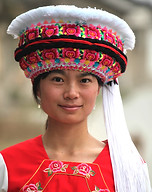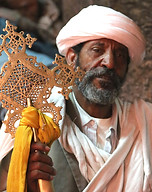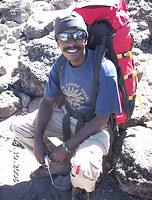SILOJADE PUBLISHING
Silojade is a small private publisher of high-quality photographic books in an age when books are less read than in years gone by. The books are designed and concepted for leisurely reading and enjoyment in a busy world plagued by constant distractions. The layout encourages turning a page a day for full appreciation of the photographs, and for absorption of the brief but informative caption placed on the matching page.
Inspiration:
Constant travel to unusual destinations inspired the authors to record their experiences in photographs, but principally of people and their environment in which they lived and worked. The emphasis was on people and their portraits rather than buildings and landscapes, although these were included when the composition, page design and placement of the images seemed appropriate. The early projects were well underway when the publications created by the distinguished photographer Steve McCurry were circulating, including his famous Afghani Girl portrait. His design model is different, with emphasis on subjects obtained from, and books published of, one country, compared with the current model of a multi-country coverage.
Concept:
The design concept and principal goal included photographs of subjects in a natural as possible pose and location without photographic aids. (reflectors, lights, posing etc). In primitive societies this was in some cases challenging, although permission was always sought from the subjects and was very rarely refused.
Travel:
Travel arrangements were often complex, coordinating flight schedules and arrival times was essential to meet and be briefed by private guides. Vehicles were usually SUVs for bad and occasionally atrocious roads and tracks, or mini vans or taxis in cities like Tokyo. The emphasis was on photographing people rather than monuments, institutions, flora and fauna or natural structures, unless these were sympathetic to the layout of the pages envisioned by forward thinking of the authors. The tribal people in primitive societies were generally benign and accepting by the presence of foreign strangers, although this was not a universal experience, particularly in New Guinea.
The People:
There was a wide range of people who the authors visited, ranging from the most primitive in the Omo Valley in Ethiopia and western Myanmar to sophisticated members of society in Spain and Japan. Women were the best and most colourfully dressed and made striking impacts particularly in Vietnam where they appeared to be competing against each other and in the Shan State in Myanmar at the Manoa Festival.
Book Design:
For the compilation and page design Peter established a model; from the numerous photos taken, a “spread” was created (two facing pages) of the portrait and associated images with brief but detailed captions. One of the design concepts included randomisation of the spreads so that every page turned provided a completely different origin and image to prevent repetition fatigue. Post processing was a time consuming but an essential component of the page design, to create the final outcome with due regard to the aesthetics of the subject, the framing, colour and proportionality of the components of the page. There was professional input for the finalisation of this process entailing complex computer manipulation. The final design decisions were made by the principal author.
Technical:
The changing technology had a profound effect on the way photographs were taken over many years, and the authors witnessed a cascade of change in photographic equipment. Some early images required high resolution processing from original prints, later digitisation from slides, and later still, the use of fully digital computerised photography incorporated into DSLR and mirrorless cameras. The most widely used mirrorless units are of course smart phones which continue to challenge the primacy of conventional photographic hardware.







